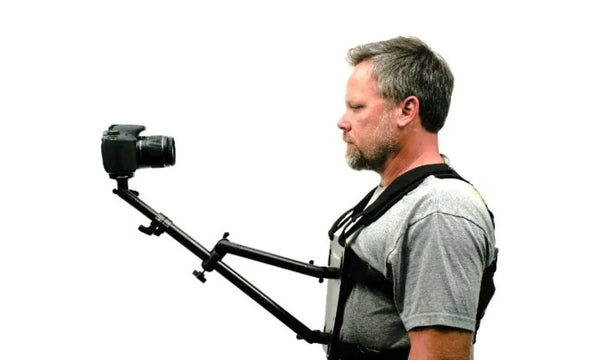
SnorriCam: What It Is and When To Use One
The SnorriCam is a type of body mount that produces the opposite effect of a Steadicam. It goes on the actor’s body, producing a wobbling effect as it follows their movements. It’s grown so popular in Hollywood that “SnorriCam” has become the name of the technique as well! Learn more about what a SnorriCam is and when you should use one in your movie.
What Is It?
A SnorriCam is also called a chest cam, body cam, or body mount. Two Icelandic filmmakers named Eiður Snorri and Einar Snorri (no relation to one another) first developed the mount. The SnorriCam body mount is attached to the body of the actor, not the cinematographer, with the camera focused on the actor’s face. When used properly, SnorriCam shots convey a sense of fear and disorientation in a character—and often project that feeling onto the audience.
When Should You Use It?
If you want to pull your audience into the panicked mindset of a character, affix a SnorriCam camera body mount to the actor in question. Adjust your camera’s field of view to center the actor’s face in the shot. Keep enough of the background in frame to provide context to the scene.
As your actor walks toward their destination, the camera will shake and wobble slightly with their body’s movements. Their face will stay centered in frame while the background moves, creating a sense of unhinged bewilderment in the character and the viewer.
Uses in Film
The SnorriCam technique has grown very popular in Hollywood in recent years, but the technique has been around for decades. Have you seen any of these iconic films?
Mean Streets
Martin Scorsese’s classic 1973 film used the SnorriCam technique to follow Harvey Keitel’s character in a scene. As he drunkenly stumbles through a bar, the camera stays centered on his face while the bar wobbles and moves in the background.
Requiem for a Dream
Director Darren Aronofsky has used SnorriCam technology in many of his films, most notably in his 2000 offering, Requiem for a Dream. Multiple characters employ the SnorriCam technique in this film to convey feelings like panic, exhilaration, and drug-induced confusion.
The Hangover
Todd Phillips’s 2009 comedy used the SnorriCam to express the feeling of—you guessed it—a hangover. When Ed Helms’s character wakes up after the gang’s wild night, a SnorriCam is attached to his body as he walks through their hotel room. That slight shakiness and focus on Helms’s face help the audience feel his confusion as he sees the destruction he and his friends wrought the night before.
Want to use a SnorriCam in your next movie? Take inspiration from the great directors who used it to their advantage. When you know what a SnorriCam is and how to use one, you can communicate a wider variety of immersive feelings to your viewers.
